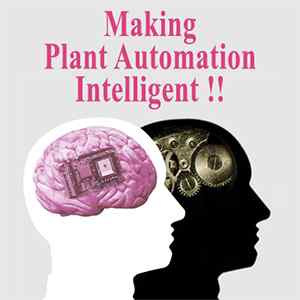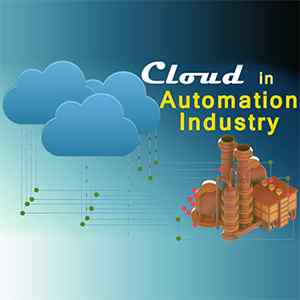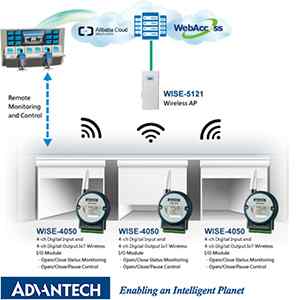Making Plant Automation Intelligent

Most of us in the automation industry have recovered from the economic crisis of the last few years, but many factories have not yet hired new personnel to meet the growing demands. Efficiency matters more than ever, and plant managers are seeking ways to streamline their manufacturing processes.
Thanks to lower cost control systems and advances in software, I/O, and Ethernet infrastructure, control engineers can better use industrial automation for its core purpose—to increase production flexibility and reduce the cost of ownership in a manufacturing or process facility.
The programmable controller is the heart of a control system. Whether it is a simple nano programmable logic controller (PLC) or a full-scale industrial PC, today’s control platforms are much more affordable than similar models were just a few years ago. It is also easier than ever to closely match the control platform’s processing performance to the machine’s requirements. There is no need to purchase more controller capability than the system requires.
In the past, smaller machines were a particular problem. It was difficult to find a cost-effective controller with built-in Ethernet connectivity. However, inexpensive nano class PLCs can now control small to midsize machines.
High-end PC control systems are at the other end of the spectrum. Plant managers require easy-to-program software with fast and comprehensive debugging and seamless integration into a human machine interface (HMI) package.
In an ideal world, a single vendor can supply a turnkey hardware/software solution. Benefits of a “one-stop-shop” include faster programming and machine start-up, a simpler machine design, less troubleshooting, and a reduced risk of downtime and lost production. Realistically, though, a single-vendor solution is not always possible, especially in a larger, more complex automation system.
Thanks to standardization of field bus protocols, it is now possible to “mix and match” fieldbus products from different vendors within a machine or system. In addition, the automation industry has standardized on Ethernet as the physical layer for reading and writing data to devices.
While commercial-grade Ethernet components might cost less initially, they cannot withstand the extreme conditions typical on the plant floor and in the field. Choosing industrial-grade Ethernet switches, Power over Ethernet, and wireless products will save money in the long run.
For small, isolated networks, unmanaged switches are the more cost-effective choice. They require no configuration and transmit the required data to the intended receiving port.
More complex networks require a managed switch. With a managed switch, you can add network configuration capability, remote monitoring and diagnostics, and essential IT-compatible network redundancy.
Managed switches have IT-friendly features such as Simple Network Management Protocol and web-based management via a standard web browser. If the application needs fast, self-healing connections between the corporate network and the factory floor, look for a managed switch with higher level functions such as Rapid Spanning Tree Protocol or Fast Ring high-speed redundancy, IGMP Snooping and Query, VLAN, and port security.
In recent years, wireless technology has become more reliable and secure, making it an attractive option in cases where physical cabling is cost-prohibitive or even impossible. In many cases, wireless can even rescue stranded data that was previously inaccessible.
By integrating modern controllers with innovations in software, Ethernet infrastructure, and I/O, control engineers can build a more flexible, powerful, and affordable automation system.
Automation has revolutionized manufacturing processes and transportation systems during the past three decades, reducing costs and improving efficiency. Enterprises and institutions in the manufacturing, process control, and transportation industries face similar challenges as they strive to build on these gains and compete effectively in a global economic environment. These challenges include:
- » Making strategic business decisions supported by precise real-time operations information
- » Minimizing operational, supply chain and service fulfillment risks
- » Reducing excess inventory through improved visibility into production performance and demand information
- » Delivering high quality products and services consistently
- » Ensuring on-time delivery and service performance
- » Improving asset lifecycle management by processing more data from equipment and processes
- » Reducing support costs for automation, equipment and industrial networks
- » Delivering repeatable customer experiences with high satisfaction
- » Enhancing the company’s ability to compete effectively in a global business environment.
Where can organizations in the manufacturing, process control, and transportation industries look for solutions? The answer lies with “industrial intelligence,” which simply put, is the enablement of enterprises to more intelligently and responsively manages industrial operations globally. Traditional industrial automation tools, including plant systems running programmable logic controllers (PLCs) and supervisory control and data acquisition (SCADA) systems are only part of what constitutes industrial intelligence.
Manufacturing and supply chain management businesses can reduce operations costs and improve manufacturing flexibility and agility by providing greater visibility into real-time production information with real-time business and economic context.
Chemical manufacturers, upstream and downstream oil and gas operations, as well as process manufacturers in the pharmaceutical, mining, metals, materials, food and beverage, and water and wastewater industries can implement industrial intelligence to improve operational performance.
Industrial intelligence works with transportation systems to enable real-time video surveillance, real-time signage, IP-enabled traffic controllers, and IP sensors.
Today, industrial intelligence extends beyond operations, connecting production environments to the rest of the business.











